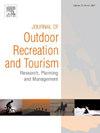设计实现人与自然的联系:德国斯帕尔特赤脚之路案例研究
IF 3.6
3区 管理学
Q1 HOSPITALITY, LEISURE, SPORT & TOURISM
Journal of Outdoor Recreation and Tourism-Research Planning and Management
Pub Date : 2024-10-07
DOI:10.1016/j.jort.2024.100827
引用次数: 0
摘要
有必要通过有意识的景观建筑设计来消除人与自然之间的隔阂。休闲基础设施可以成为一种工具,引导人类与自然建立更紧密的联系,改善健康、福利,并关注环境问题。考虑到哈拉维(Haraway,2016 年)关于通过认知自我在自然世界中的存在,与超越人类的他者建立联系并与麻烦共存的研究成果,自然环境的商品化似乎阻碍了人与自然联系的进展。这反映在对自然的讨论中,以及由对自然的恐惧所驱使的风险意识中,自然已成为未知。对德国斯帕尔特赤脚之路进行的一项混合方法研究,采用了文件分析、访谈以及包含自我民族志和专家实地评估的批评等方法,得出了关于步道设计如何改善人与自然联系的知识。这项研究的发现基于三个主要的步道属性,即具有环保意识的步道设计、赤脚部分以及互动设备和艺术。研究结果表明,有意识的步道设计可以吸引人们的好奇心,逐步引导参与者建立人与自然的联系,并消除错误的风险意识,从而实现与环境的内在联系。未来的步道开发和升级应考虑 (1) 通过低影响的方法有意识地将步道融入自然环境。(2) 利用创造性的功能,提供独特的、以自然为中心的体验,例如通过感官沉浸。(3) 同时安装游乐设备和艺术品,以掩盖小径与环境之间的边界,从而利用和鼓励更多的人流进入小径,产生积极的自然环境体验。本文章由计算机程序翻译,如有差异,请以英文原文为准。
Designing for human-nature connectedness: A case study of the Barefoot Path Spalt, Germany
There is a need to bridge the disconnection between humans and nature through conscious landscape architectural designs. Recreation infrastructure can be a tool to guide humans towards a stronger connection with nature, improving health, welfare, and care for environmental issues. Considering Haraway's (2016) work on making kin with the more-than-human other and being with the trouble through cognisant presence of the self within a natural world, it appears that progress towards human-nature connectedness is stunted by commodification of the natural environment. This is reflected in nature discourse, and a risk perception driven by fear of nature which has become the unknown. A mixed methods study of the Barefoot Path Spalt, Germany, implementing document analysis, interviews, and criticism incorporating autoethnography and expert field assessments, generated knowledge on how trail designs can improve human-nature connectedness. The study based its findings on three major trail attributes, environmentally conscious trail design, the barefoot component, and interactive equipment and art. Results show that an intrinsic connection with the environment can be targeted with intentional trail design that entices curiosity, gradually guiding participants to build human-nature connectedness, contesting false risk perception.
Management implications
Results show that well designed trails have the potential to enhance human-nature connectedness with relatively cost-effective implementations. Future trail development and upgrades should consider (1) Conscious integration of a trail into the natural environment through a low-impact approach. (2) Using a creative feature that delivers a unique, nature-centric experience, for example through sensory immersion. (3) Installing both play equipment and art to mask the border between trail and context environment makes use of, and encourages more traffic to a trail, generating positive nature-contextual experiences.
求助全文
通过发布文献求助,成功后即可免费获取论文全文。
去求助
来源期刊

Journal of Outdoor Recreation and Tourism-Research Planning and Management
HOSPITALITY, LEISURE, SPORT & TOURISM-
CiteScore
6.70
自引率
5.30%
发文量
84
期刊介绍:
Journal of Outdoor Recreation and Tourism offers a dedicated outlet for research relevant to social sciences and natural resources. The journal publishes peer reviewed original research on all aspects of outdoor recreation planning and management, covering the entire spectrum of settings from wilderness to urban outdoor recreation opportunities. It also focuses on new products and findings in nature based tourism and park management. JORT is an interdisciplinary and transdisciplinary journal, articles may focus on any aspect of theory, method, or concept of outdoor recreation research, planning or management, and interdisciplinary work is especially welcome, and may be of a theoretical and/or a case study nature. Depending on the topic of investigation, articles may be positioned within one academic discipline, or draw from several disciplines in an integrative manner, with overarching relevance to social sciences and natural resources. JORT is international in scope and attracts scholars from all reaches of the world to facilitate the exchange of ideas. As such, the journal enhances understanding of scientific knowledge, empirical results, and practitioners'' needs. Therefore in JORT each article is accompanied by an executive summary, written by the editors or authors, highlighting the planning and management relevant aspects of the article.
 求助内容:
求助内容: 应助结果提醒方式:
应助结果提醒方式:


